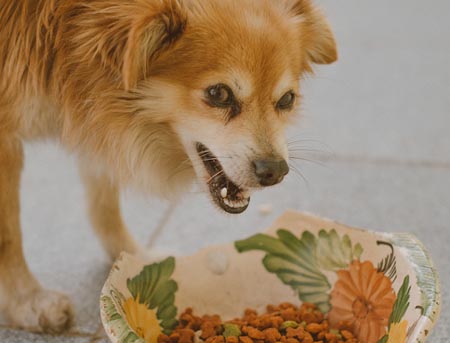How To: Stop A Dog from Resource Guarding
By Michael Albee
How to Stop a Dog from Resource Guarding
In order to stop a dog from resource guarding you first need to know why dogs do it. Resource guarding is really a fairly common issue with domesticated dogs. These dogs are just guarding something that they consider to be a valuable resource.
Some dogs do this because of temperament tendencies. Others have learned to be this way from humans.
It probably started with something like this. The dog, while it was chewing a toy, eating or lying in its favorite spot, was approached, teased or an item was taken away. They don’t want it to happen again, so they growl, snap or attack to make it stop.
Beware!

Another example may be: The dog has been verbally or physically attacked by a human. The dog may have picked up something. Then it wouldn’t give it up. (a shoe, dropped food, a kid’s toy etc). The dog has now chosen aggression in an attempt to back the human off, so this doesn’t happen again.
To remove the tendency to guard the resource …
First, the dog must know the “NO” command. Then, start by removing anything your dog may be protecting. If it’s an item like a bed, sofa or an area of the house, you obviously can’t remove the item. Instead, just block access to it by closing a door or putting up a baby gate. While working to remove this guarding issue, you may also want to keep him on leash so you can more easily control him.
To stop your dog from resource guarding begin by teaching the “Leave It” command. Because the dog knows the “NO” command, the “Leave It” command will help you because the next time he has a guarded item you can say: “NO, Leave It.” If he already has the item in his mouth, you will need to get him to “Drop it”. You can then use the “Leave It” command to get him to not take the item again.
The same can also be done if he is standing over the item. Remember to do this in a positive way. Do NOT make this into a battle of wills. Show your dog that these commands are part of a game. Reward and treat you dog when he gives up the item.
Never Use High Value Items when Beginning the Training
Always start the training with low value objects so that the praise or treats will be the obvious choice. Never use his favorite toy at first. Work up to it slowly. Wait until he is 100% responsive with low and medium value items first.
Most importantly, make sure to reward him immediately for releasing the item to you when you give the command.
Most dog aggression is man-made. When a dog takes something that it shouldn’t have a lot of people get angry. They then scream and yell at the dog (Bad Dog, or worse). The worst part is that they fail to give the dog a way to please them. Screaming and Yelling Never helps. It only serves to stimulate the dog further and can even make then nervous or fearful.
They create a situation where, once something is in their dog’s mouth, there is no way for the dog to win. This forces the dog to start defending itsself. If they will just turn it into a “Leave It” type of game the resource guarding aggression would not even happen.
TRAINER’S NOTE:
- Once something is in your dog’s mouth, it is TOO LATE to teach him not to pick it up. The only thing you can teach him at this point is to spit it out “Leave It” on command. This is why it is SO important to reward him for giving it to you when you ask for it.
- “Confronting” a dog when it shows that he is ready to do battle, is confused, feels threatened or is under stress, only escalates the aggression.
- Unless you are 100% sure what to do if your dog threatens you, getting help from a qualified professional is the best next step. Aggression is complicated. Left unchecked or not dealt with quickly and correctly, it WILL get worse. It can even lead to the death of your dog if he happens to bite a child or a friend or a neighbor.
REMINDER:
Keep your training sessions short. Your training sessions should be kept under 10 minutes in length. Finish each session with your dog correctly doing a behavior.
Always do something that your dog likes to do when the session ends. Playing with the dog’s favorite toy or going for a walk will keep your dog interested in training. Because there is a “fun time” following the training, it will make the dog more willing to train well.
NEED HELP?
There are several variations of this training that will get the same results. If you need help to Stop Your Dog from Resource Guarding, you can contact us and we can give personal instruction. Contact Us.
